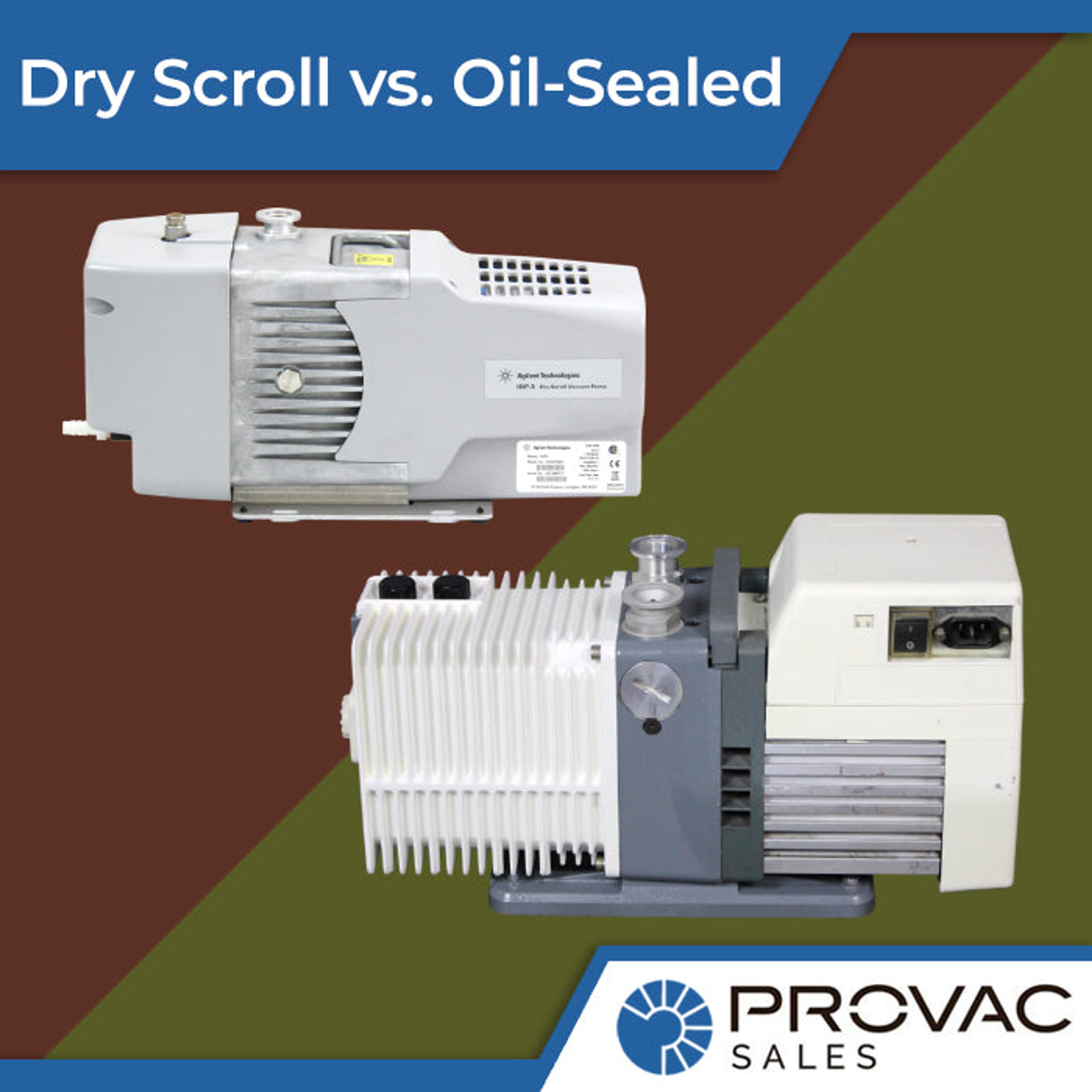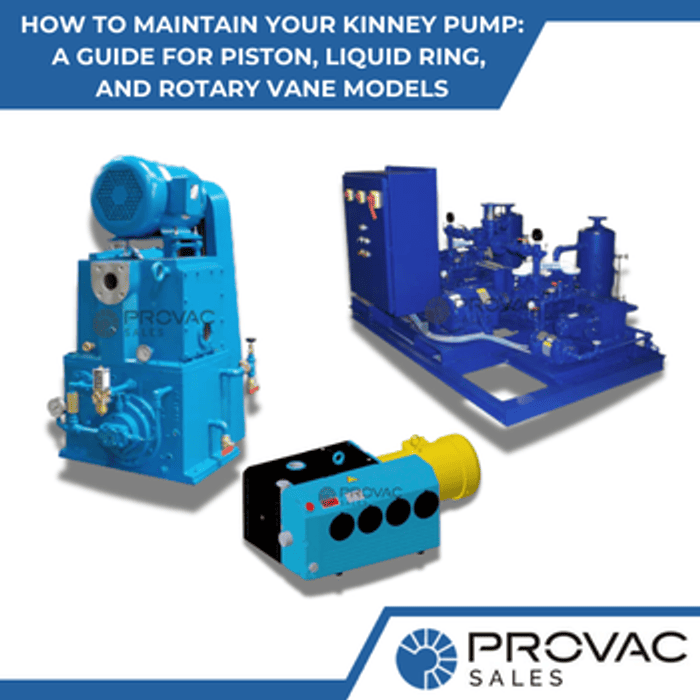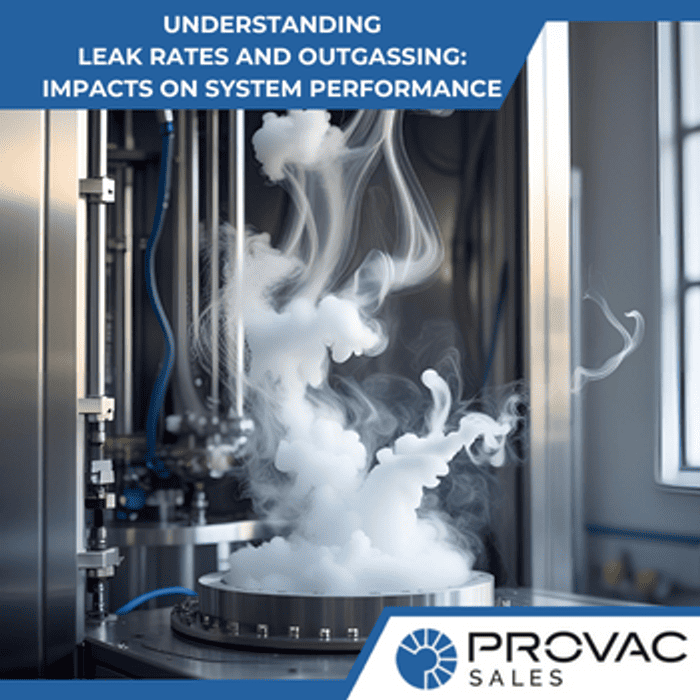Dry Scroll Pump Vs. Oil Sealed Rotary Pump
Evaluating a dry scroll pump versus an oil-sealed vane pump for your application? There are several differences between the two types including design, ultimate performance, maintenance, and upfront cost. Below we will discuss a few of the differences:
Operating Principle
Scroll Pumps
There are several different companies that manufacture scroll pumps including Edwards, Agilent, Anest Iwata, and Leybold Vacuum. While each company has their own proprietary design, the operating principle of a dry scroll pump is the same. Vacuum is created by the transfer of gas through the circular motion of orbital plates which forces the gas towards the center of the scroll plates eventually pushing the gas through the exhaust of the scroll pump. Popular applications include glovebox, gel drying, freeze drying, leak detectors, mass spectrometry, high energy physics and more. Dry scroll pumps have typical flow rates of 2-30 CFM and can provide ultimate vacuum levels of approximately 8-30 MilliTorr.
Rotary Vane Pumps
There are several different companies that manufacture oil sealed vane pumps including Agilent, Edwards, Atlas Copco, Leybold, Pfeiffer, Becker, Busch, Airtech, Kinney and more. Rotary vane pumps are available in single stage and two stage versions depending on the ultimate vacuum level you require. In a rotary vane pump, vacuum is created when gas is transferred from the inlet to the exhaust through rotary movement and sealed by oil. Inside of the pump chamber, vanes, which are continually compressed and expanded through centrifugal force and springs, travel with the rotating rotor and trap gasses in the space between the vane blade sets. Gas is expelled into the second stage for two stage oil seal vane pumps, or into the exhaust for single stage vane pumps. Vane pumps have typical flow rates of 1-450+ CFM and ultimate vacuum level of down to 30 MilliTorr (Single Stage) to 2-10 MilliTorr (Two Stage).
Cost
In general, wet oil sealed vane pumps have a less expensive initial cost, and are less costly to maintain. Wet oil sealed vane pumps do require fluid which needs to be changed on an ongoing basis.
Maintenance
Both rotary vane pumps and scroll pumps have preventative maintenance which can be performed to increase the lifespan of the pump. Performing maintenance as recommended by the original equipment manufacturer helps to prevent catastrophic failure of the equipment.
Rotary vane pumps require fluid changes and have consumable wear parts inside of the pump module which can be replaced when worn down. Wear parts include vanes, springs, gaskets, and o-rings. Provac Sales, Inc. provides rebuild service for all major manufacturer’s oil sealed vane pumps.
Dry scroll pumps have consumable wear parts inside of the pump module which can be replaced when worn down. Wear parts include tip seals, bearings, and o-rings. Provac Sales, Inc. provides rebuild service for all major manufacturer’s dry scroll pumps.
Contact us for a quotation today.
Shop our collections of ready-to-ship pumps:
- Scroll Pumps: https://www.provac.com/collections/scroll-pumps
- Oil Sealed Vane Pumps: https://www.provac.com/collections/vane-pumps





